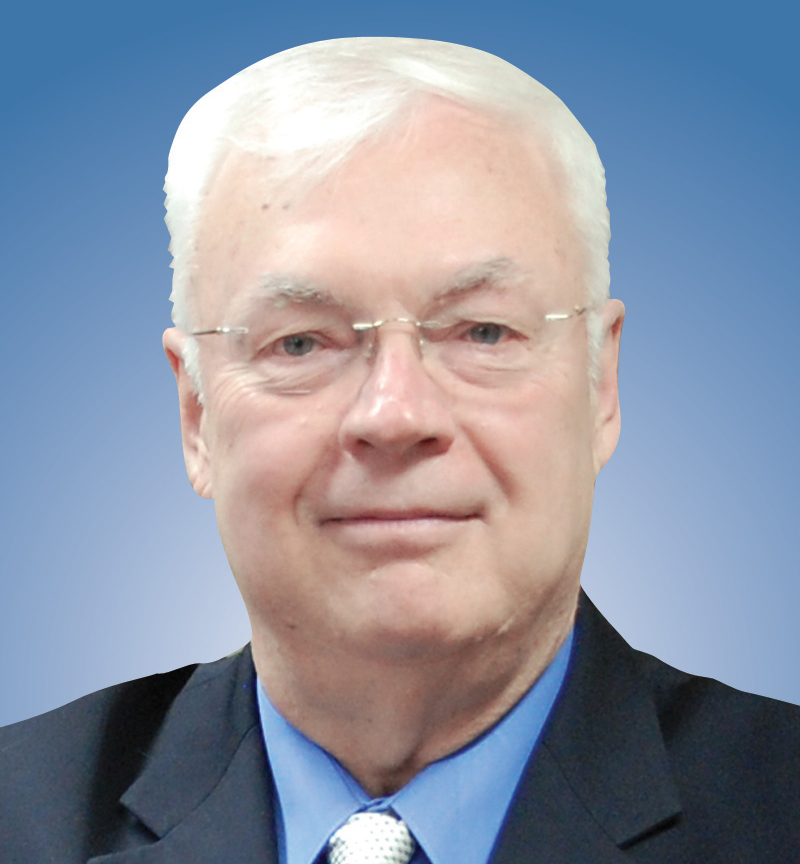Cable-Tec Expo Preview: Cable’s Fat Pipe Gets Fatter
Tech advancements, pressure from rivals converge to inspire an upgrade wave

Among a seemingly bottomless list of motivations for upgrading cable telecommunications systems, here’s one industry engineers may have overlooked: preventing bad first dates.
That’s the idea behind a novel use case for broadband data transmission from Match Group Inc., the owner of digital dating applications including Tinder and Match.com. A company technology unit has been developing live-video streaming features that are designed to help subscribers visit with and evaluate potential partners before they meet in person.
“Our ultimate vision here is for people to never have to go on a bad first date again,” Match Group adviser Shar Dubey said.
Score one for broadband. Whether it’s used to stream Netflix movies or chat with prospective romantic partners, high-quality video requires bandwidth, and bandwidth is what the cable industry is determined to deliver with its ever-expanding broadband network architecture.
Ever since introducing residential high-speed data services at scale in the late 1990s, the cable industry has been on a never-ending mission to deliver more data bits at faster speeds over blends of fiber-optic and coaxial cable distribution networks. Determined to maintain an impressive lead in U.S. residential broadband connectivity — Leichtman Research Group has said cable companies currently command close to 67% of the market — industry strategists are working to elevate performance while they stave off threats from rivals that are extending high-capacity fiber networks deep into the nation’s neighborhoods.
A shared belief bandwidth demand will continue to soar is compelling the latest wave of upgrades and fiber buildouts.”
They’re also grappling with shifting consumer expectations around media and communications. Even though a large amount of video consumption is now happening over independent streaming services like Netflix or YouTube TV, cable providers often remain first in line when it comes to dealing with user complaints over signal quality or connectivity issues.
“Control of the complete experience for cable operators to consumers is being reduced, but expectations for a perfect, error-free experience remain,” Adrian Herrera, chief marketing officer for Varnish Software, told Multichannel News. That reality has pressured cable companies to ramp up network performance and quality of experience by embracing new tools and techniques.
Multichannel Newsletter
The smarter way to stay on top of the multichannel video marketplace. Sign up below.
Expo Exhibitors Pitch Solutions
Varnish Software is among an emerging breed of suppliers working to optimize network performance partly by embracing an “edge” approach: caching more functionality closer to the point of customer interface in order to reduce latency and ward off network congestion.
These tactics and other industry advances will be on display at the 2023 SCTE Cable-Tec Expo technical conference happening in Denver, starting October 16. There, exhibitors will showcase a mix of technology enhancements that play out across the full breadth of cable’s “last-mile” access networks.
At headends, new virtual cable-modem termination systems promise improvements in signal quality along with deployment and provisioning latitude. Across the network, upgraded amplifiers and passive devices can accommodate frequencies extending as high as 1.8 GHz, expanding raw capacity.
In neighborhoods, distributed access architectures put more processing muscle at the network edge, reducing latency and adding flexibility.
At street-side fiber-optic cabinets, node splits — techniques to pare localized serving areas into smaller and smaller groups of homes — allow for impressive bursts of bandwidth.
And inside homes, multi-band Wi-Fi routers are spritzing out signals faster than ever.
Behind it all are new ways to modulate signals, effectively squeezing more information into shared spaces, courtesy of the new DOCSIS 4.0 standard.
All of these techniques are part of the cable industry’s “10G” ambition — a catchily-named initiative to maintain the high ground in prepping for the next major surge in bandwidth demand and playing a major role in the multi-gigabit data evolution.
Impact of DOCSIS 4.0
A big enabler here is DOCSIS 4.0, the CableLabs-authored data delivery specification that will start to invade the market in a big way over the next two years. Nearly half of North American cable companies will activate DOCSIS 4.0 deployments before the end of 2025, according to a 2023 survey of roughly 100 industry engineering professionals conducted by broadband systems gear maker ATX Networks. Not all of these early adopters will rush to commercialize DOCSIS 4.0 capabilities right away, but the fact that they’re poised to do so reflects widespread recognition of the value of getting ahead in the speed race.
Cable companies already are deep into the gigabit data revolution thanks to the widely deployed DOCSIS 3.1 specification, which uses bonded channels and higher order modulation to support faster data rates. But with the ability to push data rates into the multi-gigabit per second range both downstream and upstream, DOCSIS 4.0 promises to bring even more muscle to cable’s fiber-meets-coaxial architectures, likely extending the lifespan of these hybrid networks.
Control of the complete experience for cable operators to consumers is being reduced, but expectations for a perfect, error-free experience remain.”
Adrian Herrera, CMO, Varnish Software
Although many observers believe all-fiber architectures will one day prevail — a few cable companies, including Altice USA, are already well down that path — cable-industry proponents believe there’s plenty of life left in hybrid fiber coaxial (HFC) networks, especially those that are supercharged with a DOCSIS 4.0 engine.
ATX Networks, for example, believes full-on replacement of cable’s HFC architectures with all-fiber successors won’t happen until around 2050. In the meantime, cable’s hybrid networks promise to provide a best-of-both-worlds reward: the ability to render multi-gigabit data rates in both directions at a cost well below what fiber-to-the-premise providers are spending to catch up.
This confluence has cable industry engineers feeling heady about their competitive posture. ATX found only about 20% of respondents cited fiber-to-the-home providers as a serious competitive threat. That’s down from 27% a year before.
Holograms and Health
Cable’s rivals maintain a different viewpoint. AT&T, which hopes to have all-fiber lines in place in front of roughly one-fourth of U.S. addresses — some 30 million — by 2025, is convinced fiber’s superior technical characteristics will win the day, possibly sooner than some theorize. CEO John Stankey, talking with investment analysts at a Goldman Sachs conference in September, said AT&T continues to steal away customers as it plows forward with ambitious network upgrades.
Through the first half of 2023, AT&T added close to 523,000 fiber-broadband connections, bringing its total to 7.7 million. Some of those net gains are displacements of aging digital subscriber lines, but to Stankey’s point, there is almost certainly some success being had at cable’s expense. “The game is about taking share in those footprints (where) we build fiber,” Stankey said. “And we’re successfully doing that.”
The ultimate arbiter of the network wars will be customers who make buying decisions across the roughly 112 million or so U.S. addresses where broadband data networks are up, running and increasingly ingesting gobs of digital data. As of the second quarter of 2023, the average U.S. residential broadband user was consuming slightly more than 503 gigabytes of digital data in a month, a record amount that compares with just under 491 gigabytes in mid-2022 and 271 GB in 2019. The estimates come from a detailed quarterly usage report published by Jersey City, New Jersey-based OpenVault, which makes a living by optimizing broadband network performance and parsing rolled-up usage analytics provided by customers serving close to 60 million end users.
OpenVault founder and CEO Mark Trudeau, who has watched the usage numbers climb steadily year after year, points out that bandwidth-gobbling applications like 4K video and video gaming are dovetailing with ongoing video cord-cutting and a rise in the number of connected devices people and businesses are using. Because of these trends, data consumption is bound to keep rising. “I don’t think it’s ever going to stop,” Trudeau said.
This shared belief that bandwidth demand will continue to soar is what’s compelling the latest wave of upgrades and fiber buildouts. The intention is for providers to stay in front of the curve by retooling today’s networks as the world edges toward a possible all-fiber future. It’s an agenda rooted in hard data and an appreciation for historical usage trends, but it also hinges on educated guesswork. “We don’t even know what the next applications are going to be,” Trudeau said.
Needed: Bigger, Faster Networks
What is certain is that new apps and use cases will depend on a rising supply of bandwidth. Mark Dzuban, president and CEO of the Cable-Tec Expo’s organizer, the Society of Cable Telecommunications Engineers, points to futuristic applications like holographic displays — imagine a near-lifelike version of Taylor Swift rocking out in the living room — that might require as much as 700 megabits of bandwidth per second over a single video channel. These sorts of new-age visual apps will be paired with advancements in networked healthcare and home automation to support emerging societal shifts including the aging-in-place movement, Dzuban believes. Meaning: The world will need bigger, faster networks.

Besides new data-engulfing apps, there are more gizmos than ever sipping from the broadband pipe. A cybersecurity report published last December by Comcast found there were an average of 15 connected devices in homes served by the MSO’s residential data network. More are coming: The networked “smart thermostat” market alone is pegged to grow at a 17% compound annual growth rate through 2028, cable equipment supplier CommScope pointed out in a recent analysis.
Besides tracking health care and other applications, Dzuban also is keen on a new flavor of “convergence” that unites cable’s wireline broadband capabilities with the industry’s fast-growing mobile communications business. Devising ways to unify these networking concepts so that users perceive almost no gap between the two is a focal point for SCTE, which will stage a “Mobility Pavilion” at the upcoming conference. As the two technologies intertwine, the CableLabs subsidiary is also focused on “operationalizing” the industry’s tech advancements — transferring knowledge and skills throughout member organizations — as a way to achieve competitive superiority.
Revving up broadband speeds and ramping up operational acumen aren’t the only boxes cable engineers are working to check off. Capital also is being plowed into better back-office software systems, more agile set-top boxes and business-services enhancements like software-defined networking and physical premise security. There’s also renewed action happening around the advertising sector, where the long-sought dream of dynamic ad insertion — imposing different commercials into different slots in real time, based on viewer characteristics — is gaining momentum.
Rising investment here is partly an outgrowth of the Internet, which has taught a generation of media consumers to expect personalized content experiences, David Solomon, president and CEO of cable advertising provider Viamedia, said. “Consumers want flexibility in how and where they consume content, and they expect personalized ad experiences,” he said.
That and a better chance of actually enjoying a first date.
Media, Math and Myth blogger Stewart Schley writes about media, telecommunications and the business of sports from Denver. He is currently writing a book about the transformation of the U.S. cable television industry.

